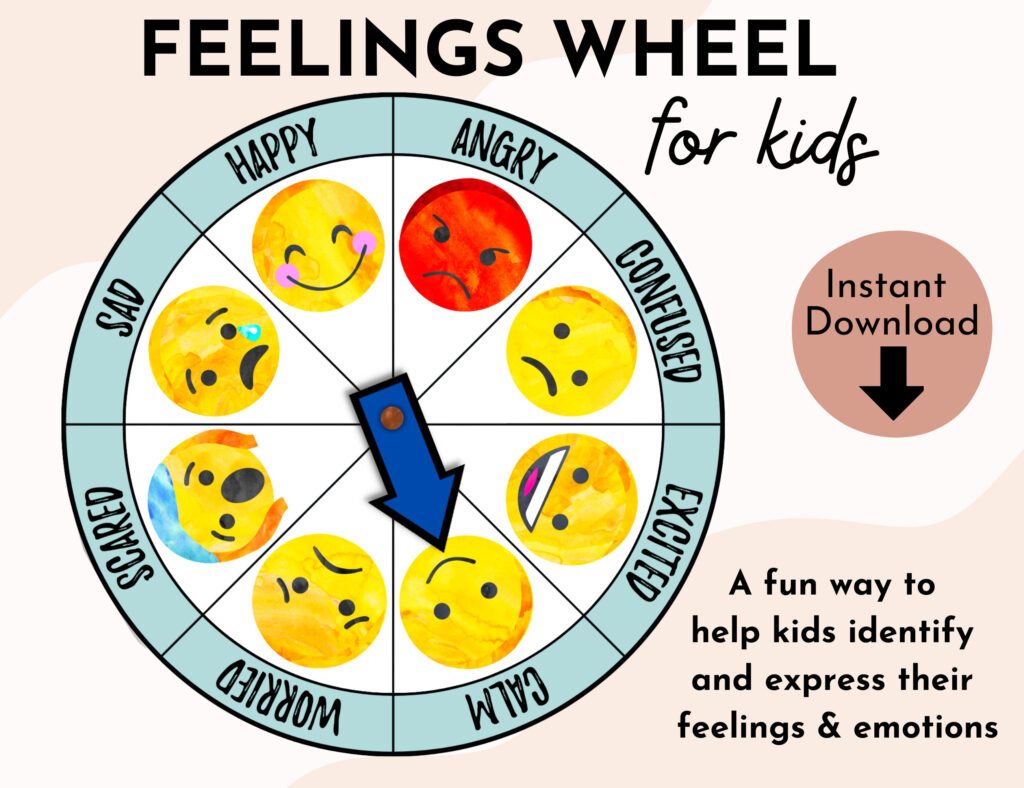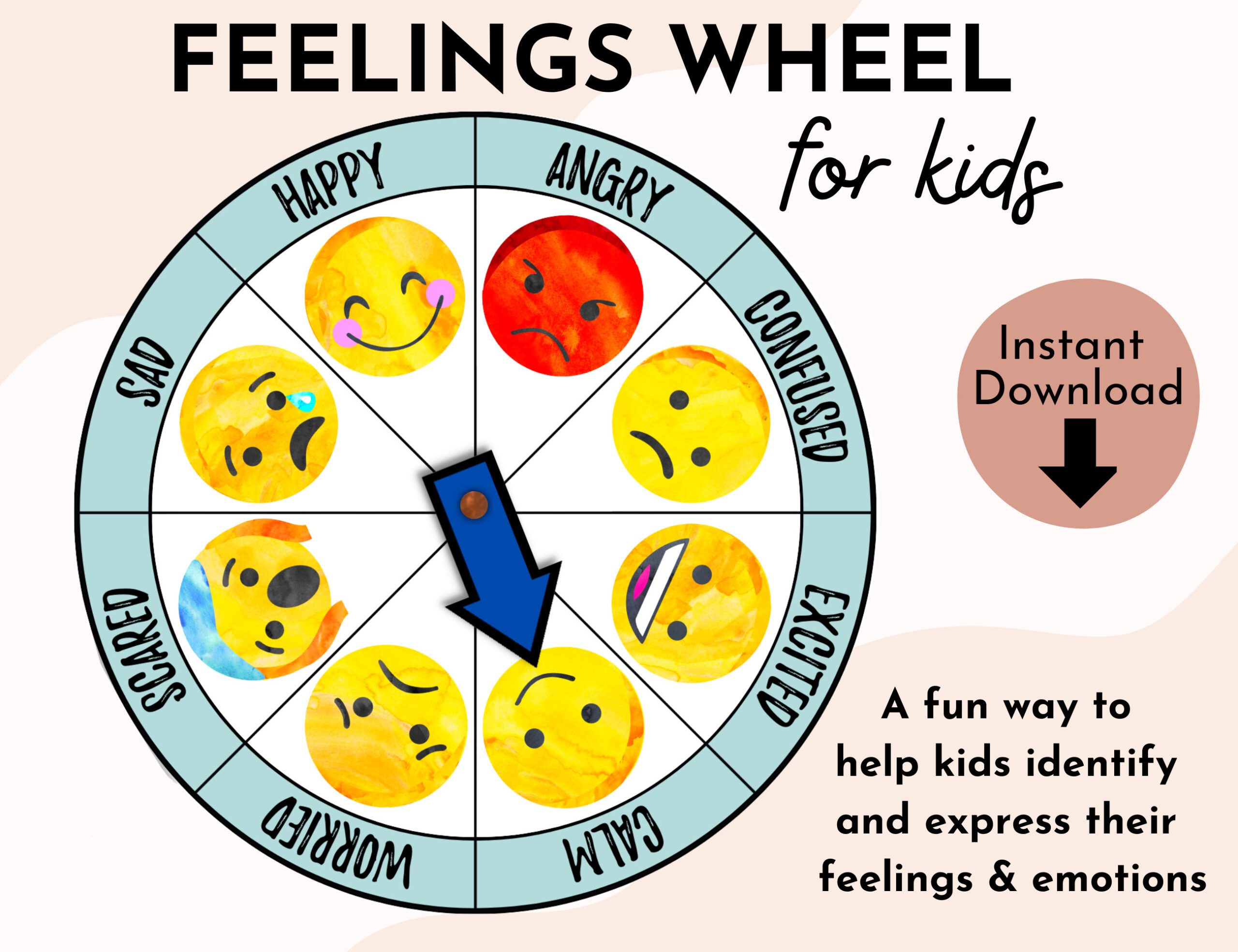
Unlocking Emotional Intelligence: A Comprehensive Guide to the Feelings Wheel
The feelings wheel, also known as the emotion wheel, is a powerful tool for enhancing emotional intelligence. It serves as a visual aid, helping individuals identify and articulate their emotions with greater precision. In a world where emotional literacy is increasingly valued, understanding and utilizing the feelings wheel can significantly improve communication, relationships, and overall well-being. This comprehensive guide explores the origins, structure, benefits, and practical applications of the feelings wheel, providing you with the knowledge to integrate it into your daily life.
The Origins and Evolution of the Feelings Wheel
The concept of mapping emotions has evolved over time, with various models and frameworks emerging to help people understand and manage their feelings. One of the most popular and accessible tools is the feelings wheel, often attributed to Dr. Gloria Willcox, who developed a foundational version in the 1980s. Her work aimed to provide a structured way for individuals to explore and express their emotions more effectively. Since then, numerous variations and adaptations of the feelings wheel have been created, each tailored to specific needs and contexts. These versions often include a wider range of emotions and nuances, reflecting the complexity of human experience.
Understanding the Structure of a Typical Feelings Wheel
A typical feelings wheel is organized in concentric circles, with the most basic emotions at the center. As you move outward, the emotions become more nuanced and specific. The central circle usually contains primary emotions such as happiness, sadness, anger, fear, surprise, and disgust. The next layer expands on these primary emotions, providing more detailed descriptions of related feelings. For example, under happiness, you might find emotions like joy, contentment, and optimism. Similarly, under anger, you might find frustration, irritation, and rage. The outer layers of the wheel offer even more granular distinctions, allowing for a highly specific identification of one’s emotional state. This layered structure makes the feelings wheel an intuitive and user-friendly tool for emotional exploration.
The Benefits of Using a Feelings Wheel
There are numerous benefits to incorporating a feelings wheel into your emotional toolkit. Here are some key advantages:
- Improved Emotional Literacy: By regularly using the feelings wheel, individuals can expand their emotional vocabulary and develop a deeper understanding of their own emotional landscape. This increased literacy enables more accurate self-reflection and communication.
- Enhanced Self-Awareness: The feelings wheel encourages individuals to pause and reflect on their current emotional state. This process of introspection can lead to greater self-awareness, allowing for better emotional regulation and decision-making.
- Better Communication: Accurately identifying and articulating emotions is crucial for effective communication. The feelings wheel provides a framework for expressing feelings in a clear and specific manner, reducing misunderstandings and fostering stronger relationships.
- Conflict Resolution: In conflict situations, the feelings wheel can help individuals identify the underlying emotions driving their reactions. By understanding these emotions, individuals can address the root causes of conflict and find more constructive solutions.
- Stress Management: Recognizing and naming emotions is a critical step in managing stress. The feelings wheel can help individuals identify sources of stress and develop coping strategies tailored to their specific emotional needs.
- Improved Mental Health: Regular use of the feelings wheel can contribute to improved mental health by promoting emotional awareness and self-regulation. It can be a valuable tool in managing anxiety, depression, and other mental health challenges.
Practical Applications of the Feelings Wheel
The feelings wheel can be applied in various settings and contexts. Here are some practical applications:
Personal Use
Individuals can use the feelings wheel as a daily tool for self-reflection. Taking a few moments each day to identify and name your emotions can significantly enhance your self-awareness and emotional regulation skills. Keep a feelings wheel handy, perhaps as a bookmark or a graphic on your phone, and check in with yourself regularly.
Therapy and Counseling
Therapists and counselors often use the feelings wheel as a therapeutic tool to help clients explore and express their emotions. It can be particularly helpful for individuals who struggle to articulate their feelings or who have difficulty identifying the nuances of their emotional experiences. The feelings wheel provides a structured and non-judgmental framework for emotional exploration, fostering a safe and supportive environment for clients to open up.
Education
The feelings wheel can be incorporated into educational settings to teach children and adolescents about emotional literacy. By introducing the feelings wheel at a young age, educators can help students develop a strong foundation for emotional intelligence, which is essential for social and academic success. Activities such as journaling, group discussions, and role-playing can be used to integrate the feelings wheel into the curriculum.
Workplace
In the workplace, the feelings wheel can be used to improve communication, teamwork, and conflict resolution. By encouraging employees to identify and express their emotions in a constructive manner, organizations can foster a more positive and supportive work environment. Training sessions and workshops can be conducted to introduce the feelings wheel and provide employees with the skills to use it effectively. A shared understanding of the feelings wheel can lead to more empathetic and productive interactions.
Relationships
Using the feelings wheel in personal relationships can improve communication and understanding between partners, family members, and friends. By openly discussing emotions and using the feelings wheel as a reference point, individuals can foster greater empathy and connection. This can be particularly helpful in resolving conflicts and building stronger, more resilient relationships. Actively listening and validating each other’s feelings, using the language provided by the feelings wheel, can create a deeper sense of emotional intimacy.
Choosing the Right Feelings Wheel for You
There are many different versions of the feelings wheel available, each with its own unique design and features. When choosing a feelings wheel, consider your personal needs and preferences. Some feelings wheels are more detailed and comprehensive, while others are simpler and more user-friendly. Some may be geared towards specific age groups or populations. Experiment with different versions to find one that resonates with you and meets your specific requirements. Online resources offer printable versions and interactive tools to help you get started. [See also: Benefits of Emotional Regulation]
Tips for Effectively Using the Feelings Wheel
To maximize the benefits of using a feelings wheel, consider these tips:
- Be Consistent: Make it a habit to check in with your emotions regularly, using the feelings wheel as a guide. Consistency is key to developing emotional awareness and self-regulation skills.
- Be Honest: Be honest with yourself about how you are feeling. Avoid judging or suppressing your emotions. The feelings wheel is a tool for exploration, not evaluation.
- Be Specific: Strive to identify the most precise emotion that you are feeling. The more specific you are, the better you will be able to understand and address your emotional needs.
- Use it as a Starting Point: The feelings wheel is a starting point for emotional exploration. Use it to delve deeper into your emotions and understand the underlying causes and triggers.
- Share Your Feelings: When appropriate, share your feelings with others using the language of the feelings wheel. This can foster greater understanding and connection in your relationships.
The Future of Emotional Intelligence and the Feelings Wheel
As emotional intelligence continues to gain recognition as a critical skill in various aspects of life, the feelings wheel is likely to become an even more valuable tool. Its accessibility and simplicity make it an ideal resource for individuals, educators, therapists, and organizations seeking to enhance emotional literacy and well-being. Future developments may include more sophisticated and personalized versions of the feelings wheel, incorporating technology and artificial intelligence to provide tailored emotional support. The ongoing research and development in the field of emotional intelligence will undoubtedly contribute to the evolution and refinement of the feelings wheel, solidifying its role as a cornerstone of emotional understanding. [See also: How to Improve Your Emotional Vocabulary]
Conclusion
The feelings wheel is a versatile and effective tool for unlocking emotional intelligence. By providing a structured framework for identifying, understanding, and expressing emotions, it empowers individuals to enhance their self-awareness, communication skills, and overall well-being. Whether used for personal reflection, therapeutic intervention, or educational purposes, the feelings wheel offers a pathway to greater emotional literacy and a more fulfilling life. Embrace the power of the feelings wheel and embark on a journey of emotional discovery and growth. Its widespread use indicates that this is a valuable tool for understanding the complexities of human emotion.

